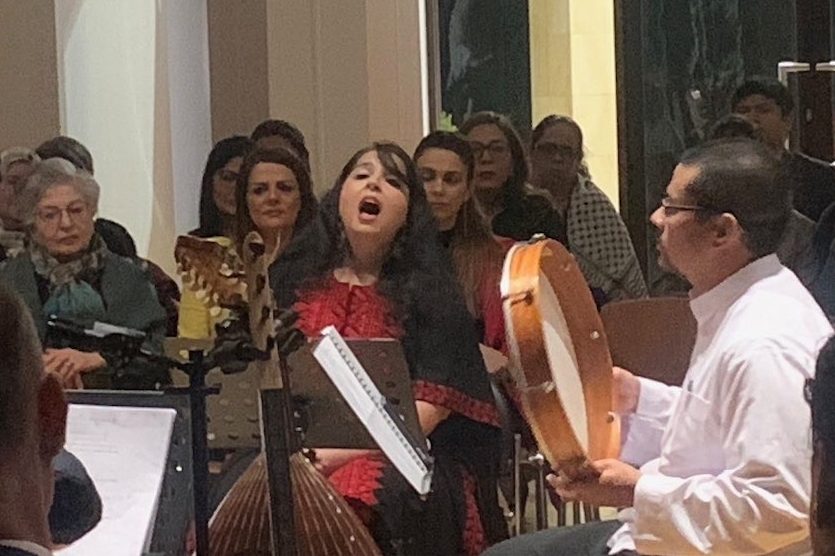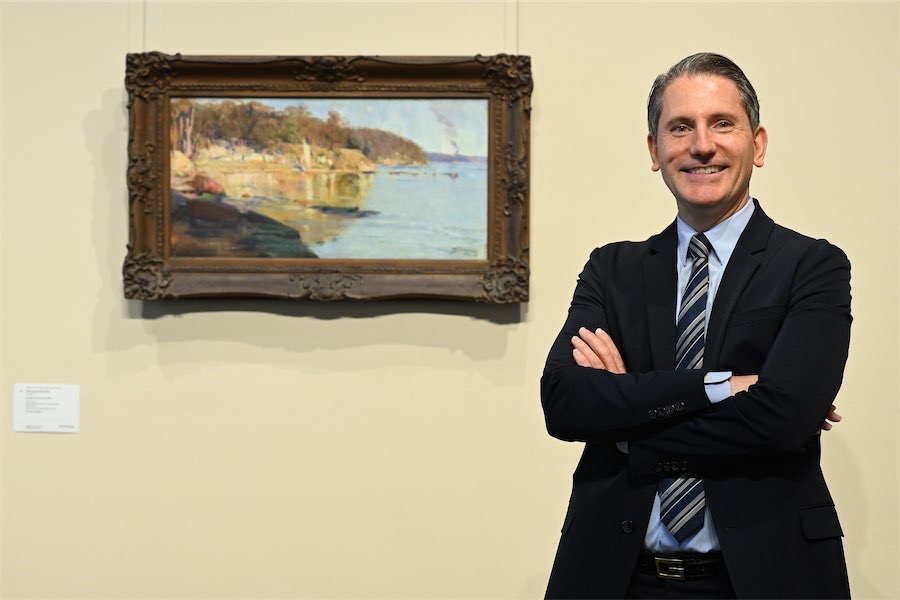
Jennifer Kemarre Martiniello is a contemporary Aboriginal (Arrente) artist who grew up in Adelaide and who holds strong connections to her grandmother’s country in Central Australia. Jenni graduated from the ANU School of Art in 1985 with a major in sculpture and then began working with glass 10 years ago after a successful career as a painter and writer.
Jennifer creates traditional objects in glass including fish traps, eel traps, dilly bags and message sticks. She states that her ongoing research gives her work richness and fresh appeal. While she is still inspired by some of the oldest living traditions, the way she presents light, form and colour of natural fibres keeps developing.
“Yellow Rushes Fish Basket #2” in hot blown and coldworked glass with canes, has a large, wide mouth. The exterior surface has been carved, giving a smooth, matt surface. The lively interior surface, which retains the gloss of blown glass, highlights the weave and the colour of the glass canes.

The fish traps and the eel traps are long, demanding excellent control of the processes of making. As in cane baskets, the canes are gathered together at the top and the overlaid clear glass allows viewers to see how they are tied and bound.
Three recent works, “Tall Red Coil Weave Basket”, “Tall Coil Weave Basket”, and “Tall Brown Ochres Coil Weave Dillybag” all made in 2017, show real development in the delicate patterning below the matt, carved surface. In these works, the matt surface draws the eyes to the process – evident below the surface – which is so redolent of textiles and basket making.
Several message sticks – all given the names of Australian birds – are in kiln-fused, hot blown and wheel carved class. Tall and narrow, they stand each with its own personality.
Bicornual baskets, traditionally made from lawyer cane, are uniquely Aboriginal and are used for leaching toxins from poisonous plants, for fishing, for carrying babies and as trade items.

The structure and weave of the basket is generally the only decoration, and I find the highly ornamented surfaces of two works with murrine rather overwhelm the simplicity of form. Two more Bicornuals “Yellow Reeds Long Weave Bicornual #3” and “#4” are more resolved and simpler.
The soft, rather loose shape, and the traditional weave of dillybags are both captured in two works “Golden Reeds Loop Weave Dillybag” and “Green and Gold Loop Weave Dillybag” both from 2017.
The forms and the complex cane work in the works in this exhibition give viewers an excellent idea of the original baskets and bags they are based on. The exhibition is the culmination of a busy year for Martiniello and one of which she should be proud.
Jenni regularly acts as a mentor to younger indigenous artists and two are also exhibiting at Tuggeranong Arts Centre. Karen Lee works from the patterns in nature and native flora from her environment in the Blue Mountains and the Nepean River. Kayannie Denigan combines her heritage and her upbringing in the northern half of Australia.
These exhibitions show a diversity of creativity and celebrate NAIDOC Week in Canberra.
Who can be trusted?
In a world of spin and confusion, there’s never been a more important time to support independent journalism in Canberra.
If you trust our work online and want to enforce the power of independent voices, I invite you to make a small contribution.
Every dollar of support is invested back into our journalism to help keep citynews.com.au strong and free.
Thank you,
Ian Meikle, editor




Leave a Reply